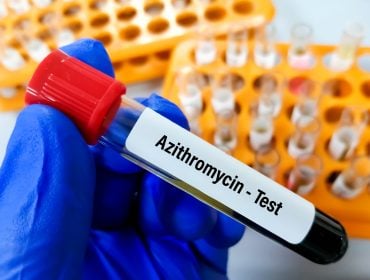Can Women Get Blue Balls: The Truth Revealed
Epididymal Hypertension is not exclusive to men. Can women experience a similar phenomenon?
While the term “blue balls” is commonly associated with men, the concept of discomfort due to sexual arousal without release is not gender-specific. The female counterpart, sometimes referred to as “blue vulva” or “blue bean,” merits consideration.
This phenomenon in women can be understood through the lens of vasocongestion, which is the increased blood flow to genital tissues. When arousal is not followed by orgasm, discomfort, heaviness, or aching can occur, similar to the sensation men describe as “blue balls,” indicating that the experience of Epididymal Hypertension is indeed a shared one across sexes.
Exploring Epididymal Hypertension
Epididymal Hypertension, colloquially known as “blue balls,” arises from prolonged sexual arousal without the gratification of an orgasm, leading to a temporary discomfort within the reproductive organs. This vasocongestive phenomenon, while predominantly associated with male physiology, does not preclude females from experiencing parallel symptoms due to analogous mechanisms of sexual arousal and release.
In describing the female counterpart, terms such as “blue vulva” or “blue bean” are sometimes employed, though less pervasive in common dialogue. They denote a comparable state wherein engorged pelvic blood vessels create a sensation of pressure and aching due to unrelieved sexual arousal.
Comparing Male and Female Physiology
The human sexual response is inherently complex. Male sexual arousal typically culminates in ejaculation, which involves the release of blood from engorged vessels within the male reproductive system. In contrast, the female sexual response does not hinge on a singular event – such as ejaculation – but is characterized by a series of physiological changes that can result in heightened sensitivity and engorgement in the genital region. Herein lies the heart of the matter regarding experiences akin to epididymal hypertension in women; the physical processes involved are marked by both similarities and distinctions. While ejaculation provides a release for men, women may experience unresolved arousal.
In both men and women, sexual arousal involves vascular congestion, yet the resultant experiences may differ. Men may feel pressure in their genitals because of ejaculation’s absence, whereas women can feel a comparable sense of fullness and pressure without a clear resolution mechanism akin to male ejaculation. Thus, both can experience discomfort, albeit through different physiological phenomena.
The concept of “blue balls” in women often aligns with the experience of vasocongestion that accompanies sexual arousal. This phenomenon, similar to its male correlate, can lead to discomfort if not followed by sexual release. Though the terminology and societal recognition differ, the underlying physiological principle in both sexes is the vasocongestive response to sexual arousal that, left unresolved, can result in discomfort.
The Female Equivalent: Debunking Myths
The notion of “blue balls” has long been associated with male discomfort, prefaced by the condition known as epididymal hypertension. In women, the concept colloquially adapts to terms like “blue vulva” or “blue bean,” born of the analogous sensation women can experience. Yet, this shared discomfort is often overshadowed by myths and misconceptions, leading to a lack of recognition and understanding. Addressing sexual health holistically requires acknowledging that women may also endure vasocongestive discomfort akin to men’s epididymal hypertension, underscoring the importance of equitable awareness in sexual wellbeing.
Terminology: Blue Vulva vs. Blue Balls
The term “blue balls” has long been discussed in the context of male sexual health, pertaining to the painful sensation due to prolonged sexual arousal without ejaculation. This discomfort is medically referred to as epididymal hypertension.
In contrast, the female counterpart, although less frequently acknowledged, manifests similarly as a throbbing or aching in the pelvic area, often following unrelieved sexual excitement. Known colloquially as “blue vulva” or “blue bean,” this phenomenon is reflective of the discomfort women might experience due to the same physiological response: vasocongestion that persists without the resolution of an orgasm.
Understanding these terms is pivotal in normalizing and acknowledging the sexual health experiences of all genders. While “blue balls” is steeped in societal discourse, its female equivalent, despite being less colloquially recognized, warrants equal attention to facilitate diverse and comprehensive sexual health dialogue.
Ultimately, the essence of the terms “blue vulva” and “blue balls” is rooted in a similar biological process, with gender-specific nomenclature denoting the same underlying condition: vasocongestive discomfort following sexual arousal not culminating in climax. This equivalency highlights the need for expanded awareness and discourse around female sexual health concerns, promoting a holistic approach that includes the acknowledgement of “blue vulva” within the spectrum of sexual well-being.
Scientific Perspective on Female Discomfort
Persistent genital arousal can lead to a condition akin to epididymal hypertension.
- Pelvic Congestion: The buildup of blood in the pelvic region, without release, leads to discomfort.
- Hormonal Fluctuations: Changes in hormones can exacerbate feelings of fullness and pain.
- Nerve Sensitivity: Heightened sensitivity post-arousal may increase the perception of pain or discomfort.
- Emotional Response: Psychological factors can intensify the physiological experience of unease.
This discomfort is often referred to as “blue vulva” or “blue bean.”The condition reflects a broader need for inclusive dialogue on sexual health.
Common Symptoms in Women
During episodes of prolonged arousal without resolution, some women may experience a dull, throbbing discomfort in the pelvic area, reflecting a congestion of blood.
This discomfort may intensify to include a sense of fullness and aching in the vulva or clitoris (often colloquially termed “blue vulva” or “blue bean”), paralleling the phenomenon described in men.
Manifestations of such discomfort can lead to a temporary decrease in sexual desire, a natural protective response to mitigate physiological strain.
Recognizing Physical Manifestations
Individuals may report a palpable tension or ache, localized chiefly in the pelvic region, reminiscent of the sensations associated with “blue balls.”
Prolonged sexual arousal without climax can lead to the accumulation of blood in the pelvic vasculature, manifesting physically as pelvic heaviness, clitoral throbbing, or vulvar discomfort, phenomena analogous to “blue balls.” These symptoms may persist until the congested blood is eventually dispersed or climax is achieved.
Furthermore, this engorgement can result in temporary alterations to the external genitalia, including swelling and heightened sensitivity to touch or pressure. This could potentially affect one’s comfort during physical activities or even when seated.
Similarly, non-resolved sexual tension might also precipitate psychological unease. This could manifest through restlessness or irritability, in conjunction with the physical sequelae of the unresolved arousal state. Recognizing these symptoms is imperative for understanding the experiences of those affected and facilitating appropriate responses to alleviate the discomfort.
Emotional and Psychological Effects
The psychological aftermath of unresolved sexual tension can be quite significant, affecting mood and mental well-being.
- Irritability and short temper may arise from the discomfort and frustration of persistent arousal.
- Anxiety may be a byproduct due to the pressure of unresolved sexual stimuli.
- Embarrassment or shame might develop, especially if the physiological symptoms are noticeable to others.
- Restlessness can stem from the inability to find relief or distraction from the engorgement.
- Decreased concentration could occur, as the mind might be preoccupied with the need for sexual release.
- Emotional disconnect might happen, potentially impacting intimate relationships by creating distance or misunderstanding.
Often, emotional stress compounds the physical discomfort associated with these symptoms.
Incessant preoccupation with the need for sexual resolution can disrupt everyday activities and strain intimate connections.
Alleviating Uncomfortable Sensations
When the nuances of Epididymal Hypertension or its equivalent female discomfort manifest, certain alleviative measures can be employed to mitigate the distress. Engaging in physical exercise or activities that refocus one’s attention away from arousal helps in reducing the intensity of engorgement. Warm baths may also aid in easing vascular congestion. For a more immediate relief, masturbation or sexual activity can resolve the pressure, reinstating equilibrium in the pelvic vasculature. However, it’s essential to approach these remedies with consideration for personal health and circumstances, ensuring that choices align with one’s wellness and values.
Immediate Relief Strategies
In the realm of discomfort mitigation, seeking relaxation is paramount. Employing deep breathing techniques may assist. For some, directing focus towards another intense sensation, like holding an ice pack, can provide a welcome distraction. Alternatively, one might engage in conscious muscle relaxation exercises that involve tensing and releasing different muscle groups.
Some individuals may find benefit in visualization practices, where one imagines a calming scene or the dissipation of tension. If discomfort persists or frequently recurs, consultation with a healthcare professional is advisable to explore further solutions.
Long-term Preventative Measures
To reduce the likelihood of experiencing pelvic congestion, consider adopting lifestyle changes.
- Exercise Regularly: Engage in activities that promote blood flow and reduce tension.
- Mindful Stress Management: Incorporate relaxation techniques like meditation or yoga.
- Stay Hydrated: Proper hydration prevents blood vessel constriction, which can contribute to congestion.
- Sexual Health Awareness: Understanding your body’s needs and limits plays a role in prevention.
- Open Communication: Discuss desires and boundaries with sexual partners to ensure mutual satisfaction.
- Balanced Diet: Nutrient-rich foods support vascular health and overall well-being.
Engagement in consistent sexual or masturbatory activities can help maintain regular blood flow. Open dialogue with a healthcare provider about sexual health can lead to individualized guidance and strategies.
Medically Reviewed by J. Frank Martin JR., MD on May 10, 2024
Secure and Confidential
STD testing services
The fastest results possbile - available in 1 to 2 days

Tagged
Categorized As
Author: STD Check Editorial Team
At STDCheck.com, we go to great lengths to ensure quality content. We’re using our own collection of data. It is not bought or made up for “click-bait” purposes. We don’t entice traffic with cheesy graphics or raunchy headlines. Our information is to promote STD testing, educate people, let go of social stigmas, and bring awareness. We also provide a completely confidential atmosphere through private testing. When we produce an article, it is fact-based. We check it with medical advisors that approve it. Our staff consists of doctors and other medical professionals who peer review the content we make available on STDCheck.com. From all over the world, we have sourced the best and the brightest content developers, including medical professionals, marketing engineers, data scientists, content specialists, and media relations.




